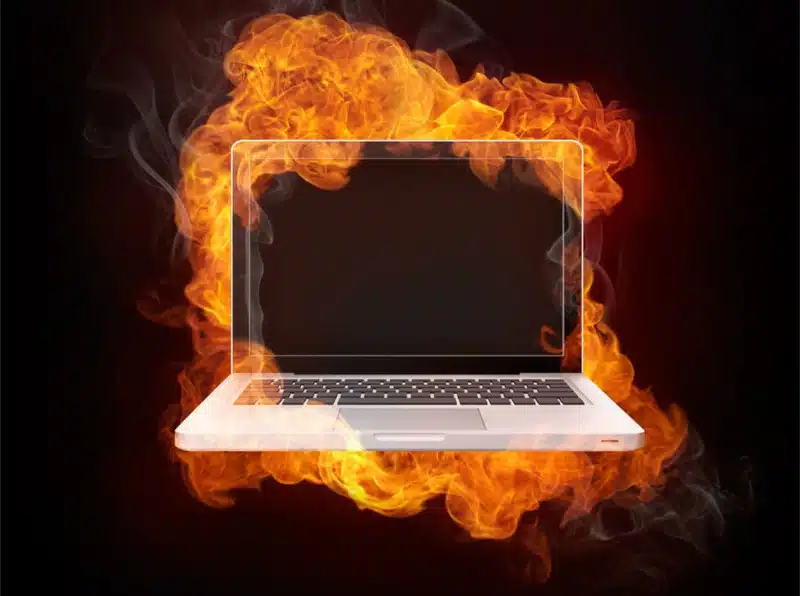
Laptop overheating symptoms can be silent yet significant indicators that your device is in distress, silently calling for attention to prevent potential damage and ensure optimal performance.
Our reliance on laptops has become more profound in the ever-evolving landscape of computer technology. However, with significant technological advancements come potential pitfalls, and one prevalent issue is laptop overheating. Understanding the symptoms is crucial to prevent irreversible damage to your device. This article will delve into the critical indicators of laptop overheating and how to address them effectively.
Common Laptop Overheating Symptoms
Laptop overheating manifests in several ways, acting as a distress signal from your device. One prominent symptom is the occurrence of frequent system crashes. If your laptop abruptly shuts down during routine tasks or intensive processes, it’s likely a result of overheating. This disrupts your workflow and poses a risk of data loss.
Additionally, observe your laptop’s performance – sluggish behavior and unexplained freezes can indicate excessive heat. These symptoms may arise when your system struggles to handle demanding applications, leading to performance bottlenecks caused by elevated temperatures.
Another noticeable indicator is the sound of your laptop’s fan. If it operates louder than usual, working tirelessly to cool down your device, it signals an overworked cooling system. Neglecting this audible warning may result in irreversible damage to internal components, affecting the overall functionality of your laptop.
Being attuned to these common symptoms allows you to take proactive measures. Regularly monitoring your laptop’s behavior and addressing these issues promptly can significantly mitigate the risks associated with overheating. By doing so, you contribute to your device’s longevity and optimal performance, ensuring a seamless and reliable computing experience.
To add an extra layer of caution, pay attention to temperature spikes. Utilize monitoring tools to track temperature fluctuations in real time, providing insights into potential overheating issues before they escalate. Remember, prevention is vital in maintaining a healthy laptop environment.
Visual Clues of Overheating
Visually inspecting your laptop can unveil critical clues about its thermal condition, providing insights into potential overheating issues.
Start by checking the bottom of your laptop. If it feels unusually hot to the touch, it suggests poor heat dissipation. Overheating can occur when the internal cooling system struggles to regulate temperatures effectively. This excessive heat affects your device’s performance and can lead to long-term damage if left unaddressed.
In addition to a hot bottom, pay attention to your laptop’s touchpad. If it feels hot during regular use, the internal components generate more heat than the cooling system can dissipate. This can lead to a compromised user experience and, in severe cases, hardware failure.
Another visual clue is a sudden drop in battery life. Overheating increases power consumption, causing your laptop to drain its battery more rapidly. If you notice a significant and unexplained reduction in battery performance, it’s time to investigate potential overheating issues.
Furthermore, watch your device’s performance logs for signs of thermal throttling. This occurs when your laptop automatically reduces its processing speed to cool down. If you identify instances of reduced performance during resource-intensive tasks, it’s a clear indication that your laptop is struggling to manage its temperature.
By being vigilant to these visual clues, you can proactively address potential overheating problems. Regular maintenance, proper ventilation, and timely intervention can significantly enhance your laptop’s longevity and overall performance, ensuring a smooth computing experience.
If you’re in the Davenport, FL, area and experiencing persistent laptop overheating issues, don’t hesitate to contact PCMechanic Computer Repair for expert diagnostics and efficient solutions to keep your device running smoothly.

